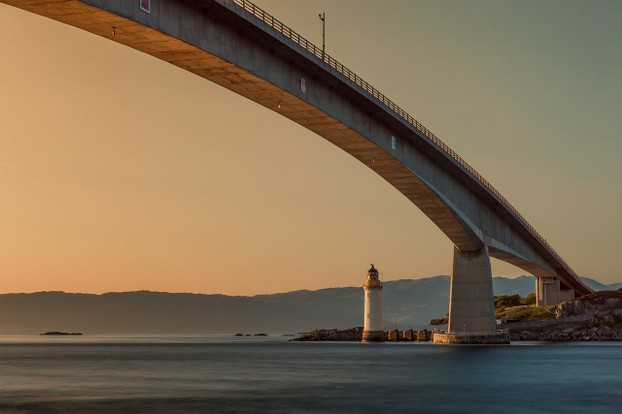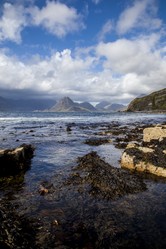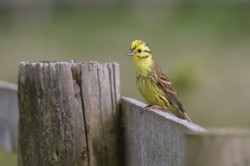Author and wildlife enthusiast Gavin Maxwell was flush with cash from the proceeds of the first two books of his Camusfearna trilogy,which detailed his experiences living in a lonely cottage and keeping otters, when he bought the island of Eilean Ban. He intended to convert the two cottages into a holiday property . The island had originally had lighthouse keepers, who maintained the lighthouse constructed in the nineteenth century by the famous Stevensons,but in the 1960s the light was automated and the keepers stood down, all ready for the enterprising Maxwell to snap up the property. He was eventually to live there when his cottage at Camusfearna burned down, but his tenure was brief as he developed cancer at the age of 55 and died.
Shortly after he had purchased it a somewhat embarrassed woman approached him in a local shop and asked had he been told that the island was haunted. He said that he had not been told, but she continued by informing him that the haunting was not harmful, but simply there. Maxwell then began to do some research, asking Richard Frere,the architect who was renovating the cottages, who gave him some useful information, having experienced the haunting himself. There was further information from a retired lighthouse keeper called McLellan, who had been seven years on the island and who had heard the voices. He could reveal some of stories from other keepers.
Two of these stories come from women,both keepers' wives. One told of having a visit from the lighthouse inspection vessel, whose engineer went with her husband to check a fault in the light, while she went to bed. Soon she was awakened by the sound of voices downstairs and, thinking that some officers had come to visit she quickly made herself presentable and went downstairs [there was also accommodation in the lighthouse.] When she entered the room from which she heard the voices they ceased and there was no one in it!
The next experience was visual, this time by another keeper's wife, but this experience was completely non-interactive. She had gone one morning,probably around dawn, to collect water from a storage tank, when standing by the tank was a man. He was clad in traditional highland dress [not the modern kilt] but probably a tunic and a plaid. He was leaning on a sword,probably a broadsword rather than the much longer claymore. He appeared to be gazing towards the hills of Skye. She stood still and watched, evincing no fear, until as the sun climbed in the East he slowly faded.At no time did the apparition seem to notice her, it was more like a memory of the past that lingers on. There are no reports of her ever seeing him again.
These experiences are recounted in Raven Seek Thy Brother, the third in the Camusfearna trilogy, which was written in the 1960s.









 Pilgrimage. A review15 days ago
Pilgrimage. A review15 days ago
 Leo the Fourteenthon 05/09/2025
Leo the Fourteenthon 05/09/2025
 The Melsonby Hoardon 03/25/2025
The Melsonby Hoardon 03/25/2025



Comments
I don't know whether Thomas changed his stance.
Thank you for your comment below in answer to my previous observation and question.
English Wikipedia, in its article Thomas Stevenson (Jul 22, 1818-May 8, 1887), describes the latter as "initially" disappointed by son Robert Louis (Nov 13, 1850-Dec 3, 1894) electing literature over engineering and law.
Is it known whether Thomas might have modified that anti-writing stance?
The family of engineers from whom the writer Robert Louis Stevenson came.
Thank you for your comment below in answer to my previous observation and question.
The first paragraph to the first subheading, Eilean Ban, advises us that "The island had originally had lighthouse keepers, who maintained the lighthouse constructed in the nineteenth century by the famous Stevensons."
Who are the "famous" Stevensons?
I don't know of the effects of later developments on the haunting. Nothing seems to have been written about it for some time, other than repeats of Maxwell's experiences.
It's interesting that the lighthouse successfully was automated, that the cottages successfully were made attractive enough to appeal to tourists and that the bridge successfully was constructed.
Such activities make me wonder about their effects upon what you so eloquently describe as "spectral legacy" in your recentest comment on Arabella Mortimer Hendry's wizzley about haunted Lincoln Castle.
Would not such non-subtle disturbances ameliorate, bother or end the haunting?
Stoking a fire, normally, though the sound has been likened to the sound of a poker, but it might not actually be that.
frankbeswick, Thank you for pictures, practicalities and products.
Would a poker drawn through a grate relate to stoking a fire (for torture or for warmth)?
Agreed on both counts, but I thought that the grating of what sounded like swords indicated some form of hostility.
A haunting need not be associated with violence. And sounds of a conversation might indicate multiple entities.